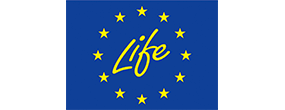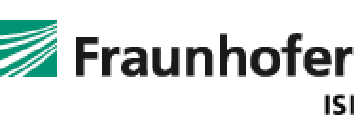Overview
In 2022, the final energy consumption in Romania was 23.9 Mtoe, compared to 21.6 Mtoe in 2000 (+ 2,3 Mtoe). Residential sector recorded 5.8 percentage points decrease in its share of total final energy consumption since 2000, reaching 8 Mtoe in 2022 (33% of total final energy consumption). Over the same period, the industrial sector decreased its share by 15 points to 23% with 5.6 Mtoe in 2022, while transport increased its share by around 16 points reaching 7.5 Mtoe (31% of final consumption) in 2022, and also services and non-specified increased their share by 4.3 percentage points, reaching 10% of the Romanian total final energy consumption (2.3 Mtoe). Agriculture sector recorded 0.7 points increase in its share of total final energy consumption since 2000, reaching 0.6 Mtoe in 2022 (2% of total final consumption).
Figure 1: Final energy consumption by sector (with climatic corrections)
Source: ODYSSEEOverall energy efficiency as measured by ODEX improved by 2.9%/ year (42% in total) from 2000 to 2022. By sector, the highest progress was registered in industry (3.3%/ year or 52%), followed by transport (2.4%/ year or 41%), residential (2.1%/ year or 37%), and in services (2%/ year or 36%).
Figure 2: Technical Energy Efficiency Index
Source: ODYSSEEEnergy savings reached 12.3 Mtoe, with industry contributing for 44% of these savings, followed by households (30%) and transport (21%).
Figure 3: Energy savings by sector
Source: ODYSSEEThe total energy supply (i.e. primary consumption) decreased by 4.7 Mtoe between 2000 and 2022, despite an increase in the final consumption (+2 Mtoe). This situation is mainly explained by a strong reduction in the consumption for other transformation (coal, gas and oil sector) (-4.1 Mtoe); the power sector and non-energy uses also reduced their consumption by 1.4 Mtoe and 1.2 Mtoe, respectively.
Figure 4: Main drivers of the total energy supply variation
Source: ODYSSEEThe final consumption increased by 2 Mtoe between 2000 and 2022. Around 85% of the effect of the increase economic and demographic growth (“activity”) over the period (+14.5 Mtoe) was offset by large energy savings (12.4 Mtoe).
Figure 5: Main drivers of the final energy consumption variation
Source: ODYSSEEAccording to art. 8 of Law no. 121/2014 on energy efficiency, the target of energy savings resulting from the application of energy policy measures is 1.5%/year for 2018 to 2020. According to art. 1 paragraph (3) of Law 121/2014 on energy efficiency with subsequent amendments and completions, by 2020 a national target is set to reduce energy consumption by 19%, forecast in the baseline scenario by the PRIMES 2007 model (year 2005), achieving a primary energy saving of 10 million toe in 2020, compared to the internal primary energy consumption forecast for 2020, of 52.99 million toe. Thus, the national target for domestic primary energy consumption for 2020 required by Article 3 (1) of the Energy Efficiency Directive is 42.99 million toe, and the achievement of this target leads to a final energy consumption of 30.32 million toe, according to the Energy Efficiency National Action Plan (PNAEE) IV, approved by Government Decision no. 203/2019.
Table 1: Sample of cross-cutting measures
| Measures | NECP measures | Description | Expected savings, impact evaluation | More information available |
|---|---|---|---|---|
| Smart metering | Yes | Order of the President of the National Energy Regulatory Authority (ANRE) no. 94/2021 amending and completing the framework conditions establishing the timetable for the implementation of intelligent electricity metering systems at national level, approved by the Order of the President of ANRE no. 177/2018, as well as for completing the Order of the President of ANRE no. 88/2015*. | 5.03 TJ | Link |
| End-user information and advice campaigns about the benefits of investing in energy efficiency | Yes | 1.01 TJ | Link | |
| Use of energy efficiency criteria for public procurement, where appropriate | No | 1.01 TJ | Link |
Buildings
The energy consumption of buildings has slightly increased between 2000 and 2022 (+0.6 Mtoe). Residential buildings absorbed a decreasing share of total energy consumption in buildings (78% in 2022, compared to 88% in 2000).
Figure 6: Final energy consumption in buildings (with climatic corrections)
Source: ODYSSEEFigure 7: Energy consumption by end-use of households (with climatic corrections)
Source: ODYSSEEFrom 2000 to 2022, unit consumption for space heating in the household sector decreased by 43 % or 2.5%/year. Electricity consumption for electric appliances and lighting increased (by 65% or 2.3%/year), while the energy consumption decreased for cooking (by 12% or 0.6%/year), and for water heating increased (by 12% or 0.5%/year). Thus households improved energy efficiency, but the effect is partly counterbalanced by greater use of household appliances.
The unit consumption for space heating with climate corrections has decreased by 2.6%:year on average from 2000 to 2022 to 13.7 koe/m2, with a very rapid reduction until 2015 (-4%/year), followed by an increase until 2019 (+2.6%/year) and a reduction until 2022 (-1.8%/year).
Figure 8: Energy consumption of household space heating per m2 (with climatic corrections)
Source: ODYSSEEFigure 9: Energy consumption per dwelling by end-use (except space heating)
Source: ODYSSEEFigure 10: Electricity consumption per dwelling by end-use (with climatic corrections)
Source: ODYSSEEThe final consumption of residential sector decreased by (0.5 Mtoe) over the period 2000-2022. The increase in the average size of dwellings contributed to raise this consumption by 3.7 Mtoe, which was completely offset by energy savings of an equivalent amount.
Figure 11: Main drivers of the energy consumption variation in households
Source: ODYSSEEFigure 12: Main drivers of the space heating consumption variation of households
Source: OdysseeEnergy consumption per employee in services sector increased by 118 % in 2022 compared to 2000, while electricity consumption per employee in services sector increased by around 75% over the same period, having a tendency to stabilize since 2012.
Figure 13: Final energy consumption of services by branch
Source: OdysseeEnergy consumption per employee in services sector increased by 118 % in 2022 compared to 2000, while electricity consumption per employee in services sector increased by around 75% over the same period, having a tendency to stabilize since 2012.
Figure 14: Energy and electricity consumption per employee in services (with climatic corrections)
Source: ODYSSEEBetween 2017 and 2022, the modernization of viable central heating systems with viable thermal energy is foreseen for the significant reduction of the costs for heating and hot water preparation, the local capitalization of the potential of renewable resources, the reduction of polluting emissions.
Table 2: Sample of policies and measures implemented in the building sector
| Measures | NECP measures | Description | Expected savings, impact evaluation | More information available |
|---|---|---|---|---|
| Long Term National Strategy for Renewing Buildings Stock | Yes | In accordance with the provisions of Directive 2018/844/EU amending Directive 2010/31/EU on the energy performance of buildings, art. 2a, Romania developed the Long-Term Renovation Strategy (SRTL) to support the renovation of the national park of residential and non-residential, public and private buildings, into a real estate park with a high level of energy efficiency and decarbonization by 2050, facilitating the transformation cost-effective of existing buildings, in buildings whose energy consumption is close to ze The national long-term renovation strategy (SRTL) includes a roadmap with measurable measures and progress indicators, targeting the entire national stock of residential and non-residential, public and private buildings, with indicative target values for 2030, 2040 and 2050 indicating how they contribute to the achievement of the 32.5% energy efficiency objective, set by the European Union for 2030, through Directive 2012/27/EU. The measurable progress indicators proposed to be monitored during the implementation of the long-term renovation strategy refer to the final energy savings achieved, the reduction of CO2 emissions, the increase in the number of nZEB buildings, the reduction in the number of people affected by energy poverty, the reduction the number of buildings in the lowest energy classes, the increase in the number of non-residential buildings equipped with BEMs or similar intelligent systems, the number of one-stop initiatives, the level of awareness among owners. | 34.75 TJ | Link |
| Government Decision no. 1575/2022 for the approval of the National Integrated Urban Development Strategy for Resilient, Green, Inclusive and Competitive Cities 2022 – 2035 | No | The National Integrated Urban Development Strategy for resilient, green, inclusive and competitive cities 2022-2035 - Romania's urban policy, provided in the annex*) which is an integral part of this decision, is approved. *) The Annex is published in the Official Gazette of Romania, Part I, no. 1275 bis | 0.36 TJ | Link |
| Order of the Minister of Development, Public Works and Administration no. 16/2023 for the approval of the Methodology for calculating the energy performance of buildings, indicative Mc001-2022. | No | This order does not apply to investment objectives/projects for which energy renovation measures are carried out: a) whose works are in progress on the date of entry into force of this order; b) for whose technical projects/feasibility studies/documentation for the approval of intervention works, the public procurement procedures were initiated until the date of entry into force of this order, by submitting for publication the notice of participation/issuing the invitation to participate, respectively whose technical projects/feasibility studies/documents for approval of intervention works have been received by the investor/beneficiary or have been submitted for approval/approval; | 0.36 TJ | Link |
Transport
The total transport energy consumption increased by 132% from 2000 to 2022. Road represented almost 96% of the total transport consumption in 2022 (+160% compared to 2000). The share of rail decreased by 8 points to 2.5 % and that of water by 3 points to 0.6 % over the same period, while domestic air share increased by 0.9 % compared to 2000.
Figure 15: Transport energy consumption by mode
Source: ODYSSEEThe shares of cars in passenger traffic has increased by 12 points since 2000 to 79% in 2022; the share of buses increased by 4 points over the same period to 14% in 2022, while the share of trains dropped by 16 points to 7 % in 2022.
Figure 16: Modal split of inland passenger traffic
Source: ODYSSEEThe traffic of goods by road, trains and also by water significantly increased since 2000. In 2022, road represented 54 % of freight traffic, an increase by 22 points since 2000, while the share of trains decreased by 33 points to 26 %; the share of water progressed by 11 points to represent around 21 % in 2022.
Figure 17: Modal split of inland freight traffic
Source: ODYSSEEFigure 18: Energy consumption of cars per passenger-km
Source: ODYSSEEEnergy consumption in transport increased by 4.1 Mtoe from 2000 to 2022. Three factors contributed to raise consumption of the sector: increased in traffic (“activity”) (+3.3 Mtoe), the increasing share of road transport compared to rail (“modal shift”) (+1.9 Mtoe), and decrease in load factors (“ others”) (+ 1.4 Mtoe) . Energy savings lowered the energy consumption of transport by 2.6 Mtoe.
Figure 19: Main drivers of the energy consumption variation in transport
Source: ODYSSEEMeasures to increase energy efficiency in transport are divided into two categories, general measures and specific measures to each mode of transport. In 2016, the Romanian Government approved the General Transport Master Plan, a strategic document that establishes the main directions for the development of transport infrastructure in Romania in the next 15 years, on all modes of transport: road, rail, naval, air and multimodal. The adoption of the Master Plan also represents a conditionality of the financing for Romania in the field of transports, through the Large Infrastructure Operational Program. The general measures are applied in accordance with the requirements of Government Decision no. 22/2008. It also takes into account the requirement that economic operators and local and central public administrative units that own more than 25 vehicles have to monitor and manage fuel consumption in order to reduce it. Renewal program of the national car park to replace old cars with a high degree of emissions and high specific consumption: The Rabla (wreck) program has been running since 2005 and allows the renewal of the car fleet owned by both individuals and legal entities with less polluting cars and with lower fuel consumption. The Administration of the Environmental Fund (AFM) has constantly sought to improve the renewal of the car fleet through this project seeking to find the necessary incentives.
Table 3: Sample of policies and measures implemented in the transport sector
| Measures | NECP measures | Description | Expected savings, impact evaluation | More information available |
|---|---|---|---|---|
| Development of intelligent digital urban management systems | Yes | 0.29 TJ | Link | |
| The program on reducing greenhouse gas emissions in transport, by promoting energy- non polluting road transport vehicles RABLA PLUS ELECTRIC CARS | No | The aim of the program is to improve the quality of the environment by purchasing new vehicles purely electric vehicles or new hybrid electric vehicles. The program aims to achieve the following objectives of environmental protection of general interest. | 1.45 TJ | Link |
| Modernization of air transport | Yes | 0.29 TJ | Link |
Industry
All branches registered in 2022 a decrease of the final energy consumption compared to 2000.
Figure 20: Final energy consumption of industry by branch
Source: ODYSSEEUnit consumption of all branches continues the descending trend since 2000.
Figure 21: Unit consumption of energy‐intensive products (toe/t)
Source: ODYSSEEEnergy savings (5.4 Mtoe) and structural effect (towards less intensive branches) (-3.2 Mtoe) more than offset growth in activity (+5.2 Mtoe), which contributed to decrease the energy consumption of industry by 2.7 Mtoe between 2000 and 2022. The offsets partially this effect.
Figure 22: Main drivers of the energy consumption variation in industry
Source: ODYSSEEThe authorization of energy auditors / attestation of energy managers supports the promotion and development of a system that ensures the availability of audits capable of highlighting the energy saving potential of the final energy consumer.
The relevant number of energy auditors authorized annually indicates the opening of the energy services market, offering the possibility to the final energy consumers to perform an energy audit according to the legal provisions. Through the information regarding the type of authorizations and the contact data of the persons authorized by the Ministry of Energy available on https://energie.gov.ro/eficienta-energetica/, the free, unconditional access of the interested parties is ensured.
The minimum transparent and non-discriminatory criteria for energy audits imposed by the Regulation on the authorization of energy auditors is a prerequisite for the development of quality work leading to the identification of measures to improve energy efficiency at the final consumer and the achievement of energy savings targets assumed by Romania through the National Energy Efficiency Action Plans.
Table 4: Sample of policies and measures implemented in the industry sector
| Measures | NECP measures | Description | Expected savings, impact evaluation | More information available |
|---|---|---|---|---|
| Photovoltaic and charging batteries financing program Electric Up | Yes | Financing small and medium-sized enterprises and economic operators in the field of hospitality services, photovoltaic panels for the production of electricity of 27 kWp and 100 kWp, and 22 kW recharging stations for electric and plug-in hybrid electric vehicles. | 0.28 TJ | Link |
| Implement a new mechanism to support high-efficiency cogeneration | Yes | 0.28 TJ | Link | |
| Introduce quality and energy performance certifications for industrial installations and products | Yes | 0.84 TJ | Link |





